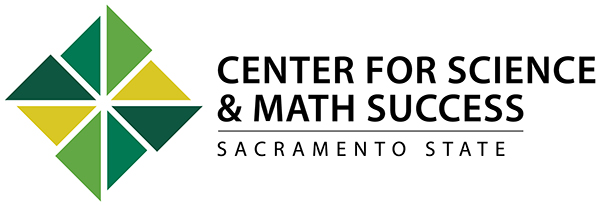
More than 60 high-achieving, low-income students transferring to Sacramento State will receive scholarships, and hundreds of other students also will get support with a new $959,999 grant from the National Science Foundation.
Over the five years of the grant, a total of 64 community college transfer students focused on majors in biological sciences or chemistry each will receive a $9,000 scholarship for their first year at Sacramento State as part of the Hornet Science Scholars program. In exchange, the students will participate as a cohort in various programs and courses to ease their way into life at a four-year institution, a process that can be difficult for them.
“Transfer students are just sort of plunked down,” says Jennifer Lundmark, a biology professor and director of the Peer Assisted Learning (PAL) program. “They don’t really have a sense of community. They often don’t understand the exact academic preparation they should have if they want to finish relatively quickly.”
Lundmark was the principal investigator (PI) for the grant application, along with co-PIs Professor Enid Gonzalez-Orta, Student Affairs Vice President Edward Mills, and Professor Jeffrey Paradis.
To qualify, community college students must have a 3.3 GPA or higher, and must have completed all lower-division science and math prerequisite courses.
The new programs will be melded into Sacramento State’s Center for Science and Math Success, an umbrella organization comprising support programs in the College of Natural Sciences and Mathematics. “This grant really showcases the collaboration between the programs,” says Gonzalez-Orta, the center’s director. “All of the center members are participating in one way or another.”
The transfer students will receive help with their academic needs and their social environment. “Both of those are important for students to be successful,” Lundmark says.
Academic help will include peer mentoring, team learning, and development of new study skills, as well as help finding employment in science-related fields during their first summer break.
The grant also benefits all transfer students by allowing PAL – the program that encourages students to help other students – to expand into two upper-division courses that don’t have that kind of support. “That will additionally support any student taking those courses,” Lundmark says. “And it provides some social community for any upper-division student who may be brand-new to the campus.”
Socially, the program will help the grant students by methods such as scheduling them as a group within major courses so that they are clustered with students they know. That kind of support can be very helpful for transfers. “There are a large number of transfers who come here and tell me they don’t know anyone,” Lundmark says. “When they see people who have three years of established friendships working together, they feel like an outsider.”
After the students’ first year, the program will shift focus to the next cohort of transfer students. Some support still will be available in their second year at Sac State, but it’s anticipated the students will have a good foothold by that time. “We feel if students are able to build both an academic and social community on campus in the first year of the Hornet Science Scholars Program, they will be well-positioned to further engage in leadership opportunities, internships, and other programs offered through the Center for Science and Math Success,” Gonzalez-Orta says.
Sacramento State’s Student Affairs Office has been closely involved with the Hornet Science Scholars effort, making sure it fits with the “transfer ready” campaign. Conducted in conjunction with local community colleges, the campaign focuses on making sure transfer students have completed all their lower-division requirements before coming to Sac State.
For more information on Hornet Science Scholars or the Center for Science and Math Success, visit csus.edu/nsm/successcenter or call (916) 278-2790. – Craig Koscho
